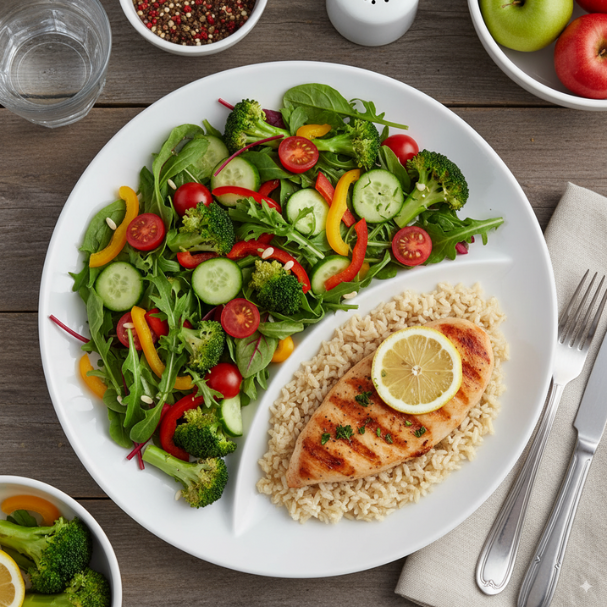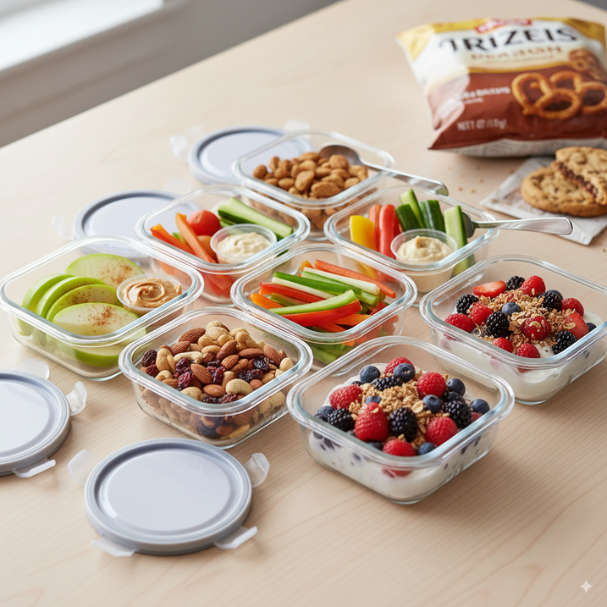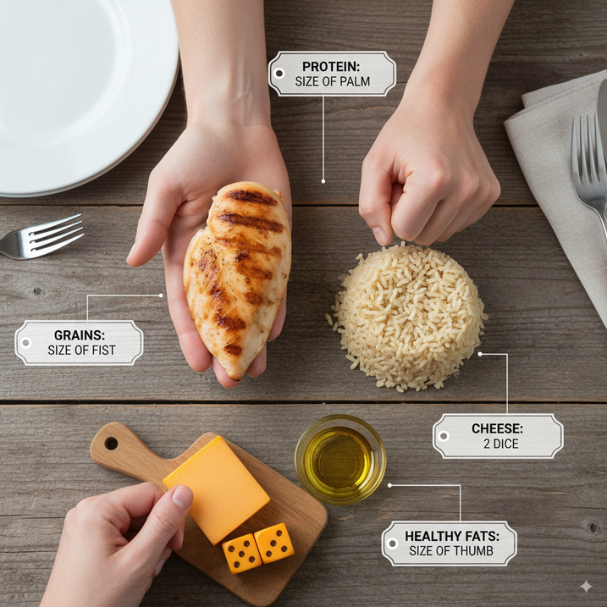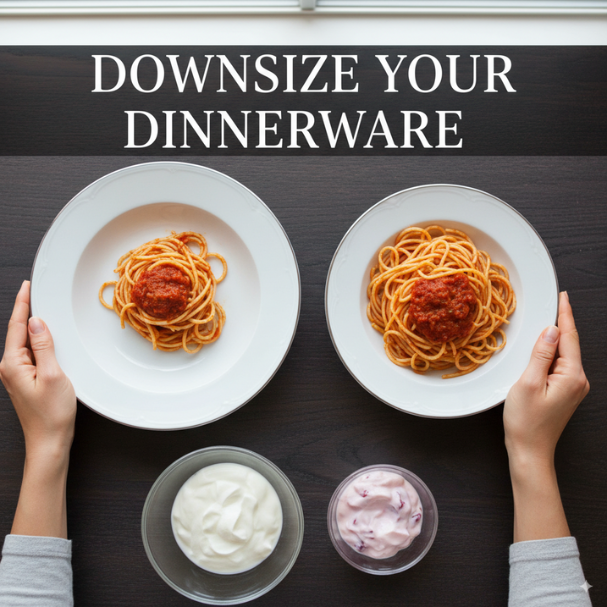Maintaining a healthy body weight is less about restrictive dieting and more about developing sustainable eating habits that can be followed for a lifetime. One of the most effective yet often overlooked strategies for long-term weight maintenance is portion control. It does not require giving up your favorite foods or following complex diet rules. Instead, it focuses on understanding how much food your body truly needs, recognizing appropriate serving sizes, and making mindful decisions at mealtime.

Many people tend to underestimate how much they eat in a day, especially when dining out or snacking mindlessly at home. Oversized portions, extra toppings, and second helpings can gradually add up without us realizing it. The beauty of portion control lies in its simplicity. When you eat balanced portions, your body gets the nutrients and energy it needs without the excess that leads to gradual weight gain. By mastering portion control techniques, you can enjoy your favorite foods while keeping your long-term health goals intact.
In this article, we will explore practical portion control strategies, tips to train your appetite, and simple tools that can help you manage portions effectively in your daily life.
Understanding Portion Sizes vs. Serving Sizes
Before diving into specific techniques, it is important to understand the difference between portion sizes and serving sizes.
-
Portion size refers to the actual amount of food you choose to eat in one sitting. This could be more or less than what is recommended. For example, when pouring cereal into a bowl, your portion may be two cups even though a suggested serving is only one cup.
-
Serving size is a standardized amount of food defined by nutrition guidelines or packaging labels. It helps measure calories and nutrients in a food item.
For long-term weight maintenance, the goal is not to obsess over numbers but to create a balance between the portion sizes you eat and your body’s energy requirements. By becoming aware of what a true serving looks like, you can gradually align your portions to better support your health.
Why Portion Control Matters for Long-Term Weight Maintenance
When you consistently eat more than your body needs, the excess energy is stored, leading to gradual weight gain. On the other hand, eating too little may leave you feeling deprived, triggering overeating later. Portion control creates a middle ground where you enjoy food without overindulging.

Here are some reasons portion control is so powerful:
-
Prevents overeating – Smaller portions help you stay satisfied without consuming unnecessary calories.
-
Encourages mindful eating – Paying attention to your food reduces distracted eating and improves satisfaction.
-
Supports digestion and energy – Eating the right amount avoids sluggishness and keeps energy levels stable.
-
Sustainable approach – Unlike restrictive diets, portion control is adaptable and works long term.
Practical Portion Control Techniques

1. Use the Plate Method
The plate method is one of the simplest portion control strategies. It involves visually dividing your plate into sections:
-
Half the plate filled with vegetables or salad
-
One-quarter with lean protein such as chicken, fish, or legumes
-
One-quarter with whole grains or starchy foods like brown rice or potatoes
This method ensures balanced nutrition while keeping portions in check. It also helps you visually understand what a balanced meal should look like without measuring every ingredient.
2. Pay Attention to Visual Cues
Since most people do not carry measuring cups to the dining table, visual portion guides are extremely helpful. For example:
-
A serving of protein (meat, chicken, or fish) is about the size of your palm.
-
A serving of carbohydrates like rice or pasta is about the size of your fist.
-
A serving of cheese is roughly the size of two dice.
-
A serving of healthy fats like butter or oil is about the size of your thumb.
These visual cues make portion management practical in everyday life, whether you are at home, eating out, or traveling.
3. Downsize Your Dinnerware
Research has shown that plate size influences how much food people eat. Larger plates make portions look smaller, encouraging overeating. By switching to smaller plates, bowls, and cups, you naturally serve yourself less while still feeling satisfied because the plate looks full. This simple trick can have a lasting impact on how much food you consume daily.
4. Slow Down While Eating
It takes about 20 minutes for your brain to register that you are full. Eating too quickly can cause you to consume more food before you feel satisfied. Slowing down by chewing thoroughly, putting down your fork between bites, and savoring the flavors allows your body enough time to signal fullness. This technique naturally prevents overeating and makes meals more enjoyable.
5. Pre-Portion Snacks
Snacking directly from a large bag of chips, nuts, or cookies often leads to eating more than intended. Instead, pre-portion your snacks into small bowls or containers. This not only helps with portion control but also makes you more aware of how much you are eating. For healthier snacking, choose fruits, vegetables, or yogurt and keep them ready in appropriate serving sizes.
6. Avoid Eating Straight from the Package
Large packages or family-size containers can trick you into eating far more than you realize. Always serve food onto a plate or bowl instead of eating straight from the package. This creates a physical boundary that allows you to monitor how much you consume.
7. Focus on Nutrient-Dense Foods
Portion control does not mean eating tiny amounts of food. Instead, it encourages balancing nutrient-dense foods with higher-calorie ones. For example, filling half of your plate with vegetables allows you to eat satisfying portions without excess energy intake. Nutrient-dense foods like lean proteins, fruits, vegetables, and whole grains provide more satiety per serving compared to calorie-dense processed foods.
8. Plan Your Meals Ahead
Meal planning helps prevent impulsive eating and oversized portions. By preparing meals in advance, you can portion them appropriately and avoid the temptation of ordering large, less balanced meals on the go. Using meal prep containers with dividers is a great way to keep portions consistent throughout the week.
9. Be Mindful When Dining Out
Restaurants often serve portions much larger than what your body actually needs. To manage this:
-
Share an entrée with a friend.
-
Ask for a half portion or a to-go box to save the rest for later.
-
Start with a side salad to help control hunger before the main dish.
-
Skip oversized appetizers or desserts unless you are sharing.
Being aware of restaurant portion sizes can make a big difference in maintaining healthy eating habits while still enjoying dining out.
10. Listen to Your Hunger and Fullness Cues
Learning to recognize your body’s signals is essential for portion control. Instead of eating until you are stuffed, aim to stop when you are comfortably satisfied. Ask yourself mid-meal: “Am I still hungry, or am I just eating because the food is there?” By practicing mindful eating, you gradually train yourself to eat in alignment with your body’s needs.
11. Stay Hydrated
Sometimes thirst is mistaken for hunger, leading to unnecessary snacking. Drinking a glass of water before meals not only helps with hydration but may also prevent overeating. Keeping water nearby throughout the day ensures you stay hydrated and better tuned to actual hunger cues.
12. Avoid Distractions While Eating
Eating in front of the television, computer, or phone often leads to mindless overeating. When distracted, you are less likely to notice how much food you are consuming. By eating at the table without distractions, you are more present, which makes it easier to control portions and enjoy your meal fully.
13. Practice the “One Plate Rule”
Instead of going back for seconds, challenge yourself to stick with one plate of food at each meal. If you still feel hungry after finishing, wait for 15–20 minutes before considering more. Often, the feeling of hunger subsides once your body registers the first serving.
14. Balance Indulgent Foods with Moderation
Portion control does not mean eliminating your favorite desserts or comfort foods. Instead, enjoy them in smaller amounts. For example, savoring a small piece of cake rather than a large slice allows you to satisfy cravings without overindulging. Over time, practicing moderation helps you create a healthy, sustainable relationship with all types of food.
Building Long-Term Habits with Portion Control

The true benefit of portion control lies in consistency. While it may take some practice to adjust at first, these techniques become second nature with time. The key is to make gradual changes rather than trying to overhaul your entire eating pattern overnight.
Some long-term strategies include:
-
Keeping healthy portion-friendly snacks readily available.
-
Practicing mindful eating at least once a day.
-
Checking in with your hunger levels before and after meals.
-
Creating an environment at home where healthy portion sizes are the norm.
By incorporating these practices regularly, you will not feel deprived or restricted, making it easier to maintain a balanced lifestyle.
Conclusion
Portion control is not about rigid rules or deprivation but about creating a balanced approach to eating that supports long-term weight maintenance. It allows you to enjoy all foods in moderation, prevent overeating, and build a healthy relationship with food. From using smaller plates and pre-portioning snacks to slowing down while eating and listening to your body’s cues, these techniques are practical and sustainable.
The ultimate goal is to create habits that fit seamlessly into your life, ensuring that maintaining a healthy weight becomes effortless rather than stressful. By mastering portion control, you give yourself the freedom to enjoy food while staying on track with your long-term well-being.




